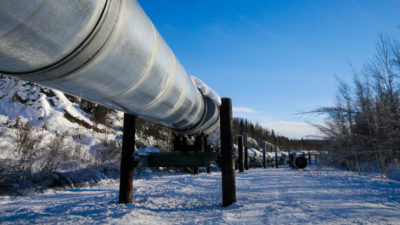The Canadian energy sector is getting crushed right now as oil prices tank and investors worry the party is over for oil sands producers.
Let’s take a look at Suncor Energy Inc. (TSX: SU)(NYSE: SU) and see if long-term investors should consider buying on the recent weakness or explore elsewhere.
Integrated business model
Suncor is Canada’s largest integrated energy company with a portfolio of first-class assets in production, refining, and retail.
The No. 1 challenge in the oil business is the replacement of resources. With nearly 7 billion barrels of reserves and a staggering 23.5 billion barrels of contingent resources, Suncor doesn’t have this problem. In fact, the company is sitting on enough bitumen to increase production and reward shareholders for decades.
Suncor’s four refineries receive a significant part of the company’s production and can process more than 460,000 barrels of crude oil per day. The refineries produce light oil, diesel fuel, gasoline, asphalt, and feedstock for lubricants.
The company also has a large retail division that operates 1,500 Petro-Canada gas stations and wholesale outlets. On the commercial side, Suncor’s lubricants unit produces and markets more than 350 products in 70 countries.
The integrated business model is very important for investors during periods of lower oil prices because the refining and retail operations can offset reduced production revenue.
Efficient operations
Suncor uses trains, pipelines, and even ships to transport its oil to the highest-priced market. In its Q2 2014 earnings statement, Suncor said it received global-based pricing on nearly 100% of its production.
The company also said it transported a record 36,000 barrels per day of crude by rail to its refinery in Montreal. This is an important development for investors because it represents a big shift in the sourcing of feedstock for the refining operation. Historically, Suncor has purchased offshore oil to supply the refinery. Now, the company is able to improve margins by shipping lower-priced western Canadian crude to the plant. The combination of rail shipments and the impending Line 9 pipeline reversal will mean Suncor can provide 100% of Montreal’s feedstock requirements from Western Canada.
When oil market becomes volatile, Suncor is able to adjust spending to protect cash flow. In the Q2 2014 report the company said it reduced capital spending for the year by $1 billion.
Finally, Suncor is doing a great job of lowering production costs as it increases output. In Q2 2014, Suncor’s cash operating cost dropped to an average of $34.10 per barrel. The Q2 2013 cost came in at $46.55 per barrel.
Supplying global oil markets
In September, Suncor sent its first tanker of Western Canadian crude oil to Europe. This demonstrates both the resolve of management to maximize margins and Suncor’s financial strength. At some point, I suspect Western Canadian crude will flow freely to the coast via Keystone XL, Northern Gateway, or Energy East. When it does, Suncor’s shareholder’s will benefit.
Shareholder returns
Suncor recently increased its dividend by 22% to $1.12 per share and the payout ratio is still only 33%. At the current stock price, investors are getting a 3% yield. The company also plans to repurchase as much as $1.1 billion in stock in the next 12 months.
Risks?
If global oil prices continue to drop and settle below the $50 mark, Suncor and its peers could be in trouble, especially if new regulations on the shipping of oil by rail reduce the amount of crude Suncor is able to move to higher-priced markets. A much longer delay in getting one of the three big pipelines built would also have a negative impact on the company.
The bottom line
Overall, Suncor is well positioned to ride out short-term dips in the oil market. The shares are trading at a reasonable 14.5 times earnings and 1.4 times book. The stock might drop further, but long-term investors should consider buying the stock near current levels.







